Perhaps you recollect Mark Minervini’s disastrous interview on CNBC’s Power Lunch with host Tyler Mathisen in October 2021. Minervini runs Minervini Private Access, LLC, a ‘stock-analysis service’ (I use this term loosely) that charges upwards of $999/month. In his interview with Mathisen, Minervini touted a recent investment in Upstart Holdings (UPST) that had increased by 25% percent since his purchase just a few days earlier.
Listen to the interview. This is EXACTLY the way none of us should ever invest!
Minervini had absolutely no idea of the nature of Upstart’s business. It would appear he had not done the most basic of basic research. Looking at the company’s website and reading Part 1 – Item 1 in the company’s Form 10-K would have been a logical start in learning about the company.
Apparently, Minervini deemed this basic step to be a complete waste of time. This is a shame for people who followed his investment suggestion because following this interview, UPST went into a freefall. Anybody who invested based on his recommendations and never subsequently sold their shares would currently be looking at a ~$363/share impairment to their investment.
This is a classic example of an investor who:
- pays no attention to the underlying fundamentals of the business; and
- invests solely on share price performance.
If you are wondering how Minervini relates to Thermo Fisher Scientific (TMO), look at TMO’s share price behaviour over the past 5 years.
Thermo Fisher’s share price can be volatile. Just before Christmas 2021, for example, TMO’s share traded above $660. At the beginning of March 2022, however, the share price had plummeted to ~$530. In mid-July 2023, the share price was ~$560 but by late October 2023 it had dropped to ~$430. I last acquired shares in mid-November @ ~$445 and the share price is now ~$492 as I compose this post.
Market and business conditions may have changed within the past year. However, Thermo Fisher itself had not fundamentally changed. During these different timeframes, TMO remained an industry leader in providing life sciences solutions, analytical instruments, specialty diagnostics, and laboratory products and biopharma services in the United States and internationally.
Share price behaviour, however, does not always accurately reflect a company’s true value. Minervini’s method of ‘investing’ (no need to understand the business) is, therefore, fundamentally flawed.
Instead of fixating on share price behaviour, Warren Buffett and the late Charlie Munger (Berkshire Hathaway) repeatedly advise investors to:
- Buy businesses, not stocks;
- Look for companies with competitive advantages that can be maintained (economic moats);
- Focus on long-term intrinsic value, not short-term earnings;
- Demand a margin of safety;
- Be patient.
Naturally, we can never consistently buy at the ‘low’ and sell at the ‘high’. If we follow Buffett’s wisdom and Munger’s advice and invest in undervalued or fairly valued great companies for the long term, however, we at least have a reasonable probability of generating attractive long-term total returns.
Affiliate
Try the Sure Dividend Newsletter for high-quality dividend growth stocks. The monthly detailed newsletter includes stock analyses, tables, charts, and portfolio ideas. Risk free 7-day free trial and $41 off only through Dividend Power for $158 per year. Sure Dividend Coupon Code – DP41
Thermo Fisher Scientific – Business Overview
The Corporate Overview on the TMO’s website is a good starting point to learn about the company. Part 1, Item 1 in the FY2022 Annual Report and Form 10-K provides a wealth of information from which to gain a basic understanding of the business. In addition, I recommend reviewing TMO’s May 24, 2023 Investor Day presentation.
Practical Process Improvement Business System (PPI)
Thermo Fisher’s PPI is a deeply ingrained philosophy of operational excellence which allows it to optimize processes, solve challenges and reduce inefficiencies.
Through the use of PPI, TMO has generated impressive growth over the past decade (2012 – 2022).
- Revenue has experienced a 14% CAGR having grown from $14.5B to $44.9B;
- Adjusted EPS has grown at a 17% CAGR: $4.91 to $23.24; $14.5B to $44.9B; and
- Free cash flow (FCF) has grown at a 15% CAGR: $1.8B to $6.9B.
Growth Potential
In 2012, the size of the markets served by TMO was ~$80B. Thermo Fisher now serves a market size that is ~$240B and which has 4% – 6% long-term market growth potential. Of importance is that TMO and its top 2 competitors have less than 50% market share. Hundreds of smaller competitors have more than a 50% market share which provides TMO with a pool of potential acquisitions.
Thermo Fisher’s long-term core organic growth revenue growth potential is 7% – 9%; it was 5% – 7% pre-pandemic.
From the 7% – 9% core organic revenue growth and 4% – 6% market growth, the plan is to achieve adjusted EPS growth in the mid-teens.
This long-term growth potential is supported by ~7,300 R&D scientists and engineers and the company’s focus on R&D investment (a 47% increase in R&D spend and ~$8B in CAPEX over the 2019 – 2023 timeframe).
Capital Deployment
Thermo Fisher is very disciplined when it comes to capital allocation.
Over time, the plan is to allocate:
- 60% – 75% of the company’s capital toward M&A; and
- 25% – 40% toward a return of capital to shareholders.
Olink Holding AB Acquisition
On October 17, TMO announced it had entered into a definitive agreement to acquire Olink Holding AB, a leading provider of next-generation proteomics solutions. The transaction values Olink at ~$3.1B which includes net cash of ~$0.143B.
The transaction is expected to be completed by mid-2024 and is subject to customary closing conditions, including regulatory approvals. Upon completion, Olink will become part of TMO’s Life Sciences Solutions segment.
Financials
Q3 and YTD2023 Results
Refer to TMO’s Q3 2023 Earnings Release, Q3 2023 Form 10-Q, and the GAAP and Non-GAAP Reconciliation and Financial Package.
In FY2020 – FY2022, TMO generated GAAP consolidated revenues of ~$32.2B, ~$39.2B, and ~$44.9B. Without the benefit of COVID-19-related revenue, TMO still expects to generate ~$42.7B in FY2023 revenue. In addition, tight expense control has led to a ~200 – ~300 basis point improvement in gross margin relative to Q3 2022.
Despite continuing broad market weakness, TMO delivered core organic growth in Q3 and a ~42% adjusted gross margin versus 41.7% in Q3 2022. This, however, falls well short of the 51.2% and the 51.6% adjusted gross margin in FY2020 and FY2021.
Adjusted operating margin in Q3 2023 was 24.2% versus 22.2% in Q3 2022. In comparison, TMO’s operating margins in FY2013 – FY2022 were 12.89, 11.28, 14.45, 14.49, 14.61, 15.74, 16.37, 24.5, 26.08, and 18.94.
Free Cash Flow (FCF)
In FY2013 – FY2022, TMO generated FCF of (in millions of $): 1,728, 2,192, 2,519, 2,814, 3,497, 3,785, 4,047, 6,815, 6,789, and 6,911. YTD FCF is $3.685B and management expects ~$6.7B – $6.9B in FY2023.
Source: TMO – GAAP/Non-GAAP Reconciliation and Financial Package – October 25, 2023
FY2023 Guidance
Thermo Fisher continues to expect to grow faster than the market for the full year and to once again deliver market share gain in 2023. Factoring in the current macroeconomic conditions and an increase in FX headwinds, core organic revenue growth is expected to be just under 1%, revenue guidance is $42.7B (previously $43.4B – $44.0B) and adjusted EPS guidance is $21.50 (previously $22.28 – $22.72).
TMO’s revised revenue guidance is $0.85B lower than the prior outlook of which $0.2B is driven by an increased FX headwind.
Net capital expenditures in FY2023 will be $1.3B – $1.5B.
FY2024 Guidance
On the Q3 earnings call, management stated:
At this point in time, a good starting assumption is that our core organic revenue growth in 2024 is similar to 2023, with ~1% growth. With our proven growth strategy, we expect to continue to take share, and that would mean market growth in 2024 will be similar to 2023 with the market declining 1 to 2 points.
In terms of phasing of our core organic revenue growth, it is best to assume a more challenging first half and then moderate growth in the second half. The pandemic-related revenues, both testing and total vaccines and therapies are likely to be ~$0.3B in 2024. This is a headwind of ~$1.3B or 3% of revenue. M&A is expected to increase revenue by ~$0.175B YoY. That’s a combination of 6 months of Olink and the inorganic portion of the CorEvitas revenue in 2024. And based on current rates, we’d expect FX to be a headwind to revenue in 2024 of ~$0.375B, just under 1%.
So wrapping all this together, 2024 revenue dollars will be very similar to 2023. Formal FY2024 guidance, however, will be provided at TMO’s next earnings call.
Source: TMO – Q3 2023 Earnings Call with Analysts
Credit Ratings
Many investors focus on an investment’s potential return but fail to consider the risk aspect.
Far too often, investors overestimate their risk tolerance only to learn their risk appetite is far less than what they had assumed.
Moody’s
As a risk-averse investor, I focus on investment grade rated companies. I look at a company’s unsecured long-term debt rating and then consider that my risk is even greater as a shareholder. It is for this reason that I typically ignore companies with Baa3 (Moody’s) and BBB- (S&P Global and Fitch) credit ratings and definitely avoid companies with a Ba1 or BB+ (and lower) rating. My investor profile is such that I do not want to assume non-investment grade speculative risk.
Moody’s continues to assign an A3 rating to TMO’s domestic unsecured long-term debt with a stable outlook. This rating was upgraded in January 2022 from Baa1.
S&P Global
In June 2022, S&P Global upgraded its BBB+ rating to A- with a stable outlook.
On September 1, 2023, Fitch upgraded TMO’s domestic unsecured long-term debt to A- from BBB+ with a stable outlook.
All three ratings are the bottom tier of the upper medium grade investment grade category. They define TMO as having a strong capacity to meet its financial commitments. TMO, however, is somewhat more susceptible to the adverse effects of changes in circumstances and economic conditions than obligors in higher-rated categories.
The following table reflects TMO’s leverage in the last 3 fiscal years and the 3 most recent quarters.

Source: TMO – GAAP/Non-GAAP Reconciliation and Financial Package – October 25, 2023
The following table reflects TMO’s short-term and long-term debt, the effective interest rates, and the maturity dates. We see that TMO took advantage of the low-interest rate environment to negotiate attractively priced credit facilities in which the maturity dates are well dispersed.

Source: TMO – GAAP/Non-GAAP Reconciliation and Financial Package – October 25, 2023

Source: TMO – GAAP/Non-GAAP Reconciliation and Financial Package – October 25, 2023
Dividends, Share Repurchases, and Stock Splits
Dividend and Dividend Yield
Thermo Fisher’s dividend history is accessible here.
On January 16, 2024, TMO is scheduled to distribute its 4th consecutive $0.35/share quarterly dividend. I envision that it will declare a $0.04/share increase in its quarterly dividend in March. If this materializes, TMO’s forward dividend yield will remain negligible based on the ~$492 share price at the time I compose this post.
Although TMO has increased its dividend for only 6 consecutive years making it a Dividend Challenger but the dividend was initiated 2012. According to analysis by Stock Rover, the growth rate has been nearly 16% in the past 5- years. Despite hte double-digit growth rate, TMO has a minimal dividend yield and the payout ratio is only 8%.

Source: Stock Rover*
However, dividend metrics are of little relevance to me when making investment decisions. I much prefer that a company reinvests in the business if this reinvestment will lead to an attractive long-term total investment return.
I envision the bulk of TMO’s future total investment return will continue to be predominantly in the form of capital appreciation.
Share Repurchases
The weighted average diluted shares outstanding in FY2013 – FY2022 (in millions) were 366, 402, 402, 397, 398, 406, 403, 399, 397, and 394. TMO continues to assume the FY2023 average diluted share count will be ~388 million shares.
On November 10, 2022, TMO’s Board authorized the repurchase of up to $4B of the company’s common stock. In Q1, TMO repurchased $3B (5.222 million shares) and there was no share repurchase activity in Q2 and Q3. On September 30, 2023, authorization remained for $1B of future repurchases of common stock.
Stock Splits
TMO had three 3-for-2 stock splits in the 1990s (1993, 1995, and 1996).
Thermo Fisher Valuation
When I wrote my August 2nd post, TMO had recently reported YTD GAAP EPS and adjusted diluted EPS of $6.83 and $10.18, respectively. Its revised adjusted EPS guidance was $22.28 – $22.72; TMO suggested analysts use $22.36 for modelling purposes. Using $22.36 and the current ~$544 share price, the forward adjusted diluted PE was ~24.3.
While some brokers were still in the process of reassessing their guidance, TMO’s valuation based on the currently available forward-adjusted diluted P/E Ratio broker estimates was:
- FY2023 – 23 brokers – a forward-adjusted diluted PE of ~24.3 using a mean of $22.38 and low/high of $22.26 – $22.63.
- FY2024 – 22 brokers – a forward-adjusted diluted PE of ~22.0 using a mean of $24.72 and low/high of $23.57 – $26.06.
- FY2025 – 17 brokers – a forward-adjusted diluted PE of ~19.4 using a mean of $28.09 and low/high of $25.57 – $31.88.
I also noted a $3.60, $5.67, and $5.61 gap between GAAP EPS and adjusted diluted EPS in FY2020 – 2022. In addition, there was a $3.35 gap between GAAP EPS and adjusted diluted EPS in the first half of FY2023. A sizable component of this variance, however, is related to the amortization of acquisition-related intangible assets which does not impact TMO’s cash flow.
I did not think TMO would generate $6.83 in diluted EPS in the second half of FY2023 as it did in the first half. I, therefore, arbitrarily assumed TMO would generate $6.40 of diluted EPS in the second half, thereby giving us ~$13.23 of diluted EPS in FY2023. With shares trading at ~$544, the forward diluted PE was ~41.1. I considered this to be high when compared to TMO’s historical valuation over the FY2013 – FY2022 timeframe.
On September 8, I acquired additional shares at ~$514. Using the currently available forward-adjusted diluted broker estimates, I arrived at the following forward-adjusted diluted PE levels and considered TMO to be fairly valued:
- FY2023 – 26 brokers – a forward-adjusted diluted PE of ~23 using a mean of $22.38 and low/high of $22.26 – $22.64.
- FY2024 – 25 brokers – a forward-adjusted diluted PE of ~20.9 using a mean of $24.63 and low/high of $23.57 – $25.65.
- FY2025 – 19 brokers – a forward-adjusted diluted PE of ~18.4 using a mean of $27.93 and low/high of $25.57 – $31.88.
In Q1 – Q3, TMO generated $5.03, $5.15, and $5.69 in adjusted diluted EPS and $11.25 and $15.87 in YTD diluted EPS and adjusted diluted EPS. TMO’s FY2023 adjusted diluted EPS guidance is now $21.50 meaning it needs to generate $5.63 in Q4. Given that TMO lowered its earnings guidance in recent quarters, I think management has been cautious in setting its most recent FY2023 guidance. I, therefore, anticipate TMO will meet or slightly exceed $5.63 in Q4.
On November 13, I acquired 25 additional shares at ~$445. Using the currently available forward-adjusted diluted broker estimates, I arrived at the following forward-adjusted diluted PE levels and considered TMO to be fairly valued:
FY2023 – 26 brokers – a forward-adjusted diluted PE of ~20.6 using a mean of $21.56 and low/high of $21.47 – $22.10.
FY2024 – 25 brokers – a forward-adjusted diluted PE of ~20.2 using a mean of $22.04 and low/high of $21.70 – $25.71.
FY2025 – 19 brokers – a forward-adjusted diluted PE of ~18 using a mean of $24.73 and low/high of $23.24 – $28.09.
Regrettably, TMO’s share price has rebounded from a ~$415 low at the end of October and is ~$492 as I compose this post. Using the currently available forward-adjusted diluted broker estimates, TMO’s forward-adjusted diluted PE levels are:
FY2023 – 26 brokers – a forward-adjusted diluted PE of ~22.8 using a mean of $21.56 and low/high of $21.47 – $22.10.
FY2024 – 25 brokers – a forward-adjusted diluted PE of ~22.3 using a mean of $22.04 and low/high of $21.70 – $25.71.
FY2025 – 19 brokers – a forward-adjusted diluted PE of ~20 using a mean of $24.73 and low/high of $23.24 – $28.09.
TMO is not as attractively valued as it was in late October/early November. I, however, still consider shares to be undervalued. Based on current FY2023 guidance, I consider ~$535 – ~$540 to be a fair value.
Thermo Fisher Scientific – Final Thoughts
In my May 19 post at Financial Freedom Is A Journey, I disclosed my decision to initiate a position in TMO. In subsequent posts that are accessible through the Archives, I disclose the purchase of additional TMO shares.
Were I not accumulating funds to help a couple of young investors on their journey to financial freedom, I would have acquired more than just the 25 TMO shares I purchased on November 13 at ~$445/share. Although my TMO exposure is limited to 177 shares (52 shares and 125 shares in two different ‘Core’ accounts) in the FFJ Portfolio, I intend to add to my exposure in the future.
If we revisit Buffett’s/Munger’s advice found earlier in this post, they essentially recommend the time to invest in great companies is when they are attractively valued. In many cases, this attractive valuation could be because the company has temporarily fallen out of favour. In several prior posts, I have expressed an interest in acquiring shares in such companies.
Looking at TMO’s long-term growth potential, I think this is an opportune time to acquire shares although its valuation is not as attractive as in late October/early November.
Author Disclosure: I am long TMO. I disclose holdings held in the FFJ Portfolio and the dividend income generated from the holdings within this portfolio. I do not disclose details of holdings held in various tax-advantaged accounts for confidentiality reasons.
Author Disclaimer: I do not know your circumstances and do not provide individualized advice or recommendations. I encourage you to make investment decisions by conducting your research and due diligence. Consult your financial advisor about your specific situation.
Related articles on Dividend Power
Mark Minervini’s disastrous interview on CNBC’s Power Lunch:
https://www.youtube.com/watch?v=NSuBT2PrGVw
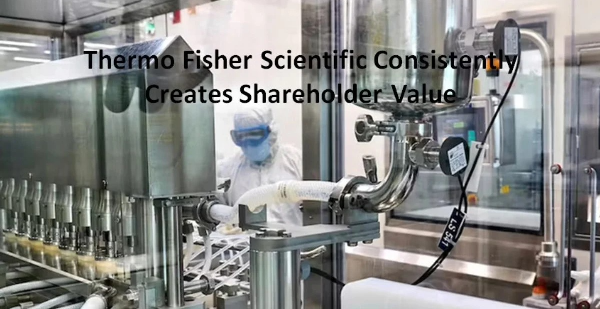

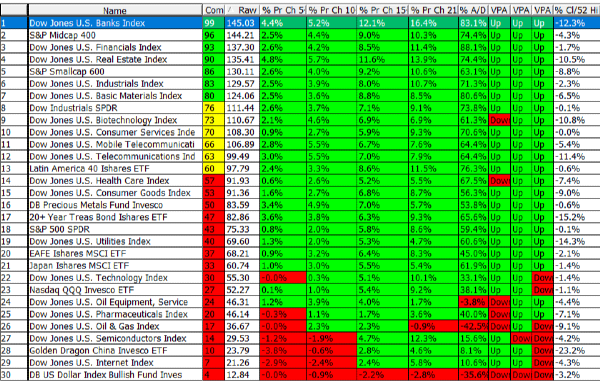
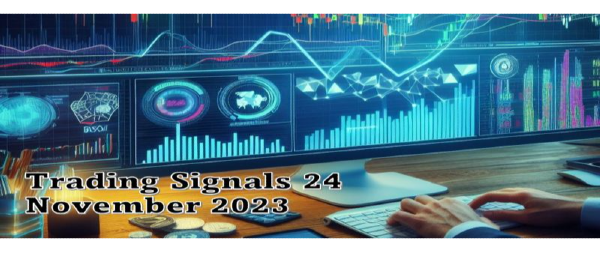
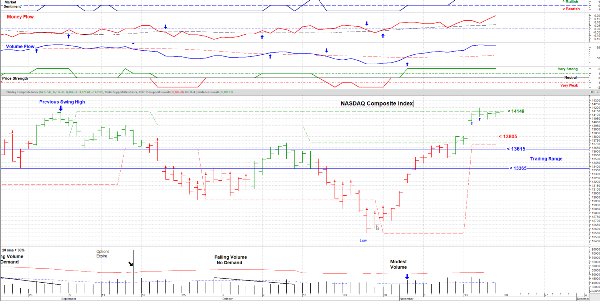

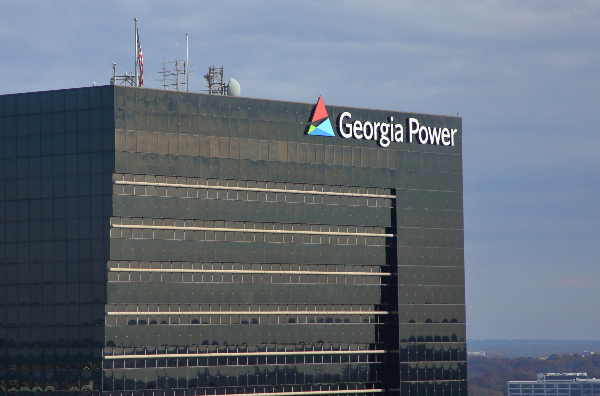

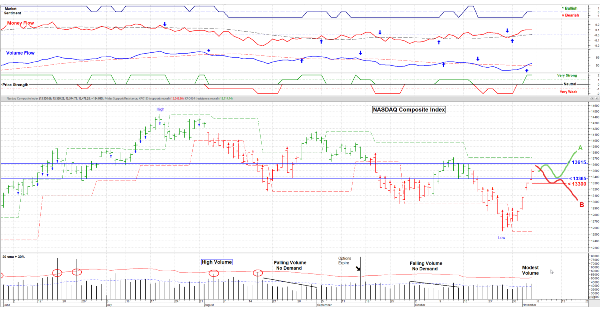




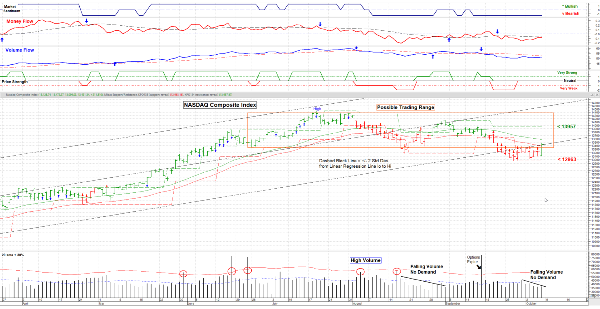
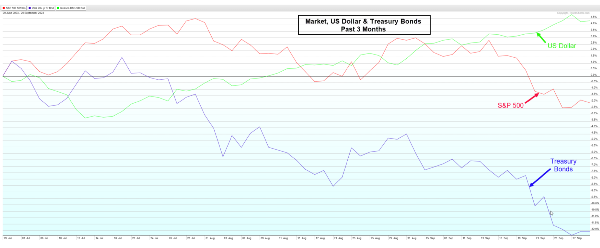


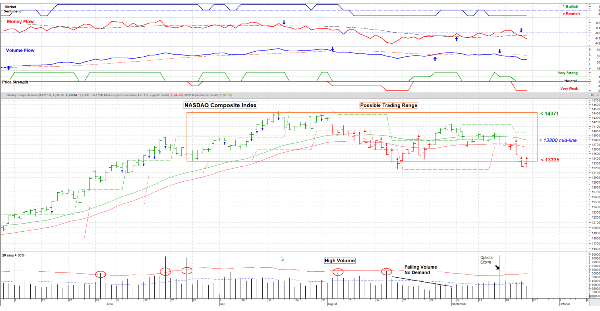
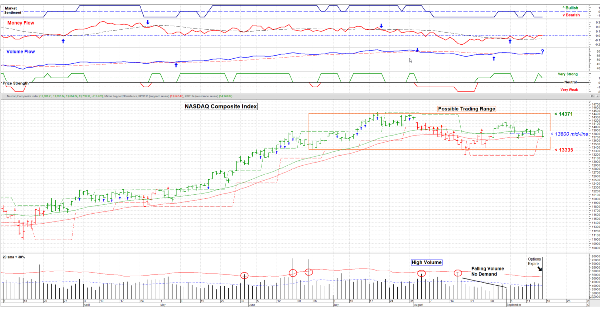
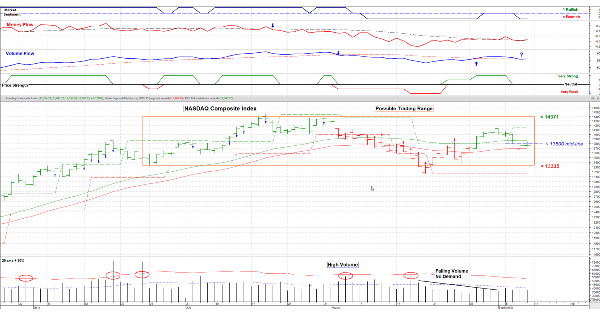










Perhaps you recollect Mark Minervini’s disastrous interview on CNBC’s Power Lunch with host Tyler Mathisen in October 2021. Minervini runs Minervini Private Access, LLC, a ‘stock-analysis service’ (I use this term loosely) that charges upwards of $999/month. In his interview with Mathisen, Minervini touted a recent investment in Upstart Holdings (UPST) that had increased by 25% percent since his purchase just a few days earlier.
Listen to the interview. This is EXACTLY the way none of us should ever invest!
Minervini had absolutely no idea of the nature of Upstart’s business. It would appear he had not done the most basic of basic research. Looking at the company’s website and reading Part 1 – Item 1 in the company’s Form 10-K would have been a logical start in learning about the company.
Apparently, Minervini deemed this basic step to be a complete waste of time. This is a shame for people who followed his investment suggestion because following this interview, UPST went into a freefall. Anybody who invested based on his recommendations and never subsequently sold their shares would currently be looking at a ~$363/share impairment to their investment.
This is a classic example of an investor who:
If you are wondering how Minervini relates to Thermo Fisher Scientific (TMO), look at TMO’s share price behaviour over the past 5 years.
Thermo Fisher’s share price can be volatile. Just before Christmas 2021, for example, TMO’s share traded above $660. At the beginning of March 2022, however, the share price had plummeted to ~$530. In mid-July 2023, the share price was ~$560 but by late October 2023 it had dropped to ~$430. I last acquired shares in mid-November @ ~$445 and the share price is now ~$492 as I compose this post.
Market and business conditions may have changed within the past year. However, Thermo Fisher itself had not fundamentally changed. During these different timeframes, TMO remained an industry leader in providing life sciences solutions, analytical instruments, specialty diagnostics, and laboratory products and biopharma services in the United States and internationally.
Share price behaviour, however, does not always accurately reflect a company’s true value. Minervini’s method of ‘investing’ (no need to understand the business) is, therefore, fundamentally flawed.
Instead of fixating on share price behaviour, Warren Buffett and the late Charlie Munger (Berkshire Hathaway) repeatedly advise investors to:
Naturally, we can never consistently buy at the ‘low’ and sell at the ‘high’. If we follow Buffett’s wisdom and Munger’s advice and invest in undervalued or fairly valued great companies for the long term, however, we at least have a reasonable probability of generating attractive long-term total returns.
Affiliate
Thermo Fisher Scientific – Business Overview
The Corporate Overview on the TMO’s website is a good starting point to learn about the company. Part 1, Item 1 in the FY2022 Annual Report and Form 10-K provides a wealth of information from which to gain a basic understanding of the business. In addition, I recommend reviewing TMO’s May 24, 2023 Investor Day presentation.
Practical Process Improvement Business System (PPI)
Thermo Fisher’s PPI is a deeply ingrained philosophy of operational excellence which allows it to optimize processes, solve challenges and reduce inefficiencies.
Through the use of PPI, TMO has generated impressive growth over the past decade (2012 – 2022).
Growth Potential
In 2012, the size of the markets served by TMO was ~$80B. Thermo Fisher now serves a market size that is ~$240B and which has 4% – 6% long-term market growth potential. Of importance is that TMO and its top 2 competitors have less than 50% market share. Hundreds of smaller competitors have more than a 50% market share which provides TMO with a pool of potential acquisitions.
Thermo Fisher’s long-term core organic growth revenue growth potential is 7% – 9%; it was 5% – 7% pre-pandemic.
From the 7% – 9% core organic revenue growth and 4% – 6% market growth, the plan is to achieve adjusted EPS growth in the mid-teens.
This long-term growth potential is supported by ~7,300 R&D scientists and engineers and the company’s focus on R&D investment (a 47% increase in R&D spend and ~$8B in CAPEX over the 2019 – 2023 timeframe).
Capital Deployment
Thermo Fisher is very disciplined when it comes to capital allocation.
Over time, the plan is to allocate:
Olink Holding AB Acquisition
On October 17, TMO announced it had entered into a definitive agreement to acquire Olink Holding AB, a leading provider of next-generation proteomics solutions. The transaction values Olink at ~$3.1B which includes net cash of ~$0.143B.
The transaction is expected to be completed by mid-2024 and is subject to customary closing conditions, including regulatory approvals. Upon completion, Olink will become part of TMO’s Life Sciences Solutions segment.
Financials
Q3 and YTD2023 Results
Refer to TMO’s Q3 2023 Earnings Release, Q3 2023 Form 10-Q, and the GAAP and Non-GAAP Reconciliation and Financial Package.
In FY2020 – FY2022, TMO generated GAAP consolidated revenues of ~$32.2B, ~$39.2B, and ~$44.9B. Without the benefit of COVID-19-related revenue, TMO still expects to generate ~$42.7B in FY2023 revenue. In addition, tight expense control has led to a ~200 – ~300 basis point improvement in gross margin relative to Q3 2022.
Despite continuing broad market weakness, TMO delivered core organic growth in Q3 and a ~42% adjusted gross margin versus 41.7% in Q3 2022. This, however, falls well short of the 51.2% and the 51.6% adjusted gross margin in FY2020 and FY2021.
Adjusted operating margin in Q3 2023 was 24.2% versus 22.2% in Q3 2022. In comparison, TMO’s operating margins in FY2013 – FY2022 were 12.89, 11.28, 14.45, 14.49, 14.61, 15.74, 16.37, 24.5, 26.08, and 18.94.
Free Cash Flow (FCF)
In FY2013 – FY2022, TMO generated FCF of (in millions of $): 1,728, 2,192, 2,519, 2,814, 3,497, 3,785, 4,047, 6,815, 6,789, and 6,911. YTD FCF is $3.685B and management expects ~$6.7B – $6.9B in FY2023.
Source: TMO – GAAP/Non-GAAP Reconciliation and Financial Package – October 25, 2023
FY2023 Guidance
Thermo Fisher continues to expect to grow faster than the market for the full year and to once again deliver market share gain in 2023. Factoring in the current macroeconomic conditions and an increase in FX headwinds, core organic revenue growth is expected to be just under 1%, revenue guidance is $42.7B (previously $43.4B – $44.0B) and adjusted EPS guidance is $21.50 (previously $22.28 – $22.72).
TMO’s revised revenue guidance is $0.85B lower than the prior outlook of which $0.2B is driven by an increased FX headwind.
Net capital expenditures in FY2023 will be $1.3B – $1.5B.
FY2024 Guidance
On the Q3 earnings call, management stated:
Source: TMO – Q3 2023 Earnings Call with Analysts
Credit Ratings
Many investors focus on an investment’s potential return but fail to consider the risk aspect.
Far too often, investors overestimate their risk tolerance only to learn their risk appetite is far less than what they had assumed.
Moody’s
As a risk-averse investor, I focus on investment grade rated companies. I look at a company’s unsecured long-term debt rating and then consider that my risk is even greater as a shareholder. It is for this reason that I typically ignore companies with Baa3 (Moody’s) and BBB- (S&P Global and Fitch) credit ratings and definitely avoid companies with a Ba1 or BB+ (and lower) rating. My investor profile is such that I do not want to assume non-investment grade speculative risk.
Moody’s continues to assign an A3 rating to TMO’s domestic unsecured long-term debt with a stable outlook. This rating was upgraded in January 2022 from Baa1.
S&P Global
In June 2022, S&P Global upgraded its BBB+ rating to A- with a stable outlook.
On September 1, 2023, Fitch upgraded TMO’s domestic unsecured long-term debt to A- from BBB+ with a stable outlook.
All three ratings are the bottom tier of the upper medium grade investment grade category. They define TMO as having a strong capacity to meet its financial commitments. TMO, however, is somewhat more susceptible to the adverse effects of changes in circumstances and economic conditions than obligors in higher-rated categories.
The following table reflects TMO’s leverage in the last 3 fiscal years and the 3 most recent quarters.
Source: TMO – GAAP/Non-GAAP Reconciliation and Financial Package – October 25, 2023
The following table reflects TMO’s short-term and long-term debt, the effective interest rates, and the maturity dates. We see that TMO took advantage of the low-interest rate environment to negotiate attractively priced credit facilities in which the maturity dates are well dispersed.
Source: TMO – GAAP/Non-GAAP Reconciliation and Financial Package – October 25, 2023
Source: TMO – GAAP/Non-GAAP Reconciliation and Financial Package – October 25, 2023
Dividends, Share Repurchases, and Stock Splits
Dividend and Dividend Yield
Thermo Fisher’s dividend history is accessible here.
On January 16, 2024, TMO is scheduled to distribute its 4th consecutive $0.35/share quarterly dividend. I envision that it will declare a $0.04/share increase in its quarterly dividend in March. If this materializes, TMO’s forward dividend yield will remain negligible based on the ~$492 share price at the time I compose this post.
Although TMO has increased its dividend for only 6 consecutive years making it a Dividend Challenger but the dividend was initiated 2012. According to analysis by Stock Rover, the growth rate has been nearly 16% in the past 5- years. Despite hte double-digit growth rate, TMO has a minimal dividend yield and the payout ratio is only 8%.
Source: Stock Rover*
However, dividend metrics are of little relevance to me when making investment decisions. I much prefer that a company reinvests in the business if this reinvestment will lead to an attractive long-term total investment return.
I envision the bulk of TMO’s future total investment return will continue to be predominantly in the form of capital appreciation.
Share Repurchases
The weighted average diluted shares outstanding in FY2013 – FY2022 (in millions) were 366, 402, 402, 397, 398, 406, 403, 399, 397, and 394. TMO continues to assume the FY2023 average diluted share count will be ~388 million shares.
On November 10, 2022, TMO’s Board authorized the repurchase of up to $4B of the company’s common stock. In Q1, TMO repurchased $3B (5.222 million shares) and there was no share repurchase activity in Q2 and Q3. On September 30, 2023, authorization remained for $1B of future repurchases of common stock.
Stock Splits
TMO had three 3-for-2 stock splits in the 1990s (1993, 1995, and 1996).
Thermo Fisher Valuation
When I wrote my August 2nd post, TMO had recently reported YTD GAAP EPS and adjusted diluted EPS of $6.83 and $10.18, respectively. Its revised adjusted EPS guidance was $22.28 – $22.72; TMO suggested analysts use $22.36 for modelling purposes. Using $22.36 and the current ~$544 share price, the forward adjusted diluted PE was ~24.3.
While some brokers were still in the process of reassessing their guidance, TMO’s valuation based on the currently available forward-adjusted diluted P/E Ratio broker estimates was:
I also noted a $3.60, $5.67, and $5.61 gap between GAAP EPS and adjusted diluted EPS in FY2020 – 2022. In addition, there was a $3.35 gap between GAAP EPS and adjusted diluted EPS in the first half of FY2023. A sizable component of this variance, however, is related to the amortization of acquisition-related intangible assets which does not impact TMO’s cash flow.
I did not think TMO would generate $6.83 in diluted EPS in the second half of FY2023 as it did in the first half. I, therefore, arbitrarily assumed TMO would generate $6.40 of diluted EPS in the second half, thereby giving us ~$13.23 of diluted EPS in FY2023. With shares trading at ~$544, the forward diluted PE was ~41.1. I considered this to be high when compared to TMO’s historical valuation over the FY2013 – FY2022 timeframe.
On September 8, I acquired additional shares at ~$514. Using the currently available forward-adjusted diluted broker estimates, I arrived at the following forward-adjusted diluted PE levels and considered TMO to be fairly valued:
In Q1 – Q3, TMO generated $5.03, $5.15, and $5.69 in adjusted diluted EPS and $11.25 and $15.87 in YTD diluted EPS and adjusted diluted EPS. TMO’s FY2023 adjusted diluted EPS guidance is now $21.50 meaning it needs to generate $5.63 in Q4. Given that TMO lowered its earnings guidance in recent quarters, I think management has been cautious in setting its most recent FY2023 guidance. I, therefore, anticipate TMO will meet or slightly exceed $5.63 in Q4.
On November 13, I acquired 25 additional shares at ~$445. Using the currently available forward-adjusted diluted broker estimates, I arrived at the following forward-adjusted diluted PE levels and considered TMO to be fairly valued:
FY2023 – 26 brokers – a forward-adjusted diluted PE of ~20.6 using a mean of $21.56 and low/high of $21.47 – $22.10.
FY2024 – 25 brokers – a forward-adjusted diluted PE of ~20.2 using a mean of $22.04 and low/high of $21.70 – $25.71.
FY2025 – 19 brokers – a forward-adjusted diluted PE of ~18 using a mean of $24.73 and low/high of $23.24 – $28.09. Regrettably, TMO’s share price has rebounded from a ~$415 low at the end of October and is ~$492 as I compose this post. Using the currently available forward-adjusted diluted broker estimates, TMO’s forward-adjusted diluted PE levels are:
FY2023 – 26 brokers – a forward-adjusted diluted PE of ~22.8 using a mean of $21.56 and low/high of $21.47 – $22.10.
FY2024 – 25 brokers – a forward-adjusted diluted PE of ~22.3 using a mean of $22.04 and low/high of $21.70 – $25.71.
FY2025 – 19 brokers – a forward-adjusted diluted PE of ~20 using a mean of $24.73 and low/high of $23.24 – $28.09.
TMO is not as attractively valued as it was in late October/early November. I, however, still consider shares to be undervalued. Based on current FY2023 guidance, I consider ~$535 – ~$540 to be a fair value.
Thermo Fisher Scientific – Final Thoughts
In my May 19 post at Financial Freedom Is A Journey, I disclosed my decision to initiate a position in TMO. In subsequent posts that are accessible through the Archives, I disclose the purchase of additional TMO shares.
Were I not accumulating funds to help a couple of young investors on their journey to financial freedom, I would have acquired more than just the 25 TMO shares I purchased on November 13 at ~$445/share. Although my TMO exposure is limited to 177 shares (52 shares and 125 shares in two different ‘Core’ accounts) in the FFJ Portfolio, I intend to add to my exposure in the future.
If we revisit Buffett’s/Munger’s advice found earlier in this post, they essentially recommend the time to invest in great companies is when they are attractively valued. In many cases, this attractive valuation could be because the company has temporarily fallen out of favour. In several prior posts, I have expressed an interest in acquiring shares in such companies.
Looking at TMO’s long-term growth potential, I think this is an opportune time to acquire shares although its valuation is not as attractive as in late October/early November.
Author Disclosure: I am long TMO. I disclose holdings held in the FFJ Portfolio and the dividend income generated from the holdings within this portfolio. I do not disclose details of holdings held in various tax-advantaged accounts for confidentiality reasons.
Author Disclaimer: I do not know your circumstances and do not provide individualized advice or recommendations. I encourage you to make investment decisions by conducting your research and due diligence. Consult your financial advisor about your specific situation.
Related articles on Dividend Power
Originally Posted on dividendpower.org
Mark Minervini’s disastrous interview on CNBC’s Power Lunch:
https://www.youtube.com/watch?v=NSuBT2PrGVw